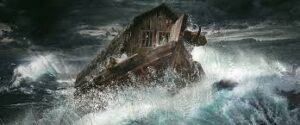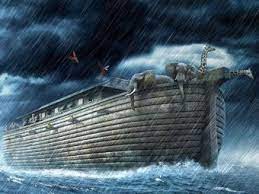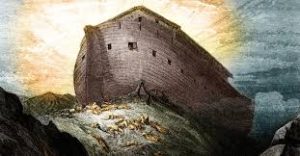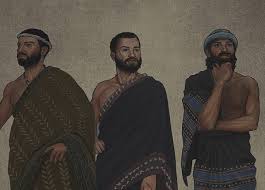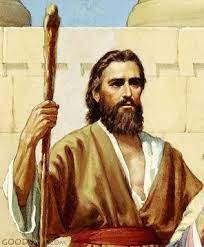Cm – Carbon 14 Dating and the Flood
Carbon 14 Dating and the Flood
Evidence for Accelerated Decay
Large amounts of carbon-14 found in coal and diamonds support a young earth and the biblical account of the Flood.
Technical Definitions:
● Carbon-14: a short-lived isotope used for dating organic materials like fossils. It has a half-life of 5,730 years. It is known as radiocarbon dating.
● Half-life: the amount of time it takes for half of the mass of an isotope to decay radioactively.
● Uniformitarianism: the belief that geological processes have remained constant since the earth was formed. It implies vast amounts of geological time needed for evolution.
In opposition to uniformitarianism, the Bible paints a radically different picture of our planet’s history. Specifically, it describes a time when God catastrophically destroyed the earth and essentially all its life. The only consistent way to interpret the geological record in light of this event is to understand that the fossil-bearing rocks are the result of a massive Flood that occurred only a few thousand years ago and lasted about one year. The biblical interpretation of the rock record implies that the animals and plants preserved as fossils were all contemporaries. This means trilobites, dinosaurs and mammals all lived on the planet at the same time, and they perished together in the world-destroying cataclysm that the bible calls the Flood.133

But uniformitarianism opposes the biblical account and uses different methods to try to cut God out of the picture altogether. Carbon-14 is by far the most familiar radioisotope dating method used by evolutionists to prove the earth is billions of years old. It also is different from the other dating methods because of its especially short life scale. The half-life of carbon 14 is 5,730 years, compared with millions or billions of years for the radioisotopes used in other methods. Also, instead of rock samples, carbon-14 dating is applied to the remains of once-living plants, animals and humans – materials such as wood, charcoal, bone, shells and fossils. Scientist Willard Libby first introduced the radiocarbon dating method in the 1940s while he worked at the University of Chicago. Libby received the 1960 Nobel Prize in Chemistry for pioneering this important dating technique.134
Carbon-14 atoms form several miles out in the atmosphere. They float down toward the earth’s surface and combine with oxygen to make carbon dioxide. As plants and trees absorb this carbon dioxide, the carbon-14 atoms become a small part of the fiber. After the vegetation dies, it no longer absorbs carbon from the air and any sign of accumulated carbon-14 slowly decays back to nitrogen. The remains of animals or humans react the same.
For earth materials, animals or humans to be classified as ancient, all of this original C-14 content should be completely decayed away. For example, after ten half-lives of decay, any radioactive material has only 0.1 percent remaining. To express this another way, any carbon-containing materials that are truly older than 100,000 years should be “carbon-14 dead” and traceable amounts of C-14 simply should not exist.135
Modern technology has made reliable detection of minute amounts of carbon-14 possible. In the earlier decades, the carbon-14 content in samples was measured by counting the beta radiation emitted from the few C-14 atoms that decayed in a sample during a few hours of monitoring. This is a statistical process with serious limitations and has resulted in incorrect counting that has dated many samples as being much older than it actually is. Even though this technique is very questionable, it is still practiced today.
The evolutionary chain, linking apes to men, has been, and continues to be a sham. In China, in 1921, fragments of skulls, jaws, and teeth were found in a limestone cliff near Peking. All of these creatures had been killed and eaten, and the skulls preserved as trophies. These were tested with carbon-14 methods; however, during World War II, all the original bones were lost. Some prominent anthropologists believe this hunter was true man, but Peking “man” must have been simply a giant ape.
The first find of Australopithecines was discovered in 1924. They were supposed to have many ape-like features of the skull, but teeth like a man. Their brains were only about a third as large as that of modern man and they were only about four feet tall. But anatomists Dr. Solly Zuckerman and Dr. Charles Oxnard, both evolutionists, after many years of research employing the latest and most sophisticated methods of analysis, concluded that the Australopithecines did not walk upright in a human manner and were not an intermediate between ape and man.
Said to be 700,000 years old, Java Man was put together on the evidence of a femur (large leg bone), a skullcap and three molar teeth. These parts were found within a fifty-foot range and tested with C-14. Dr. Dubois, its discoverer, concealed for thirty years the fact that he had found human skulls near his Java Man, and at the same level. So, man was already there when this creature was alive. The femur was probably from a human, and the skull cap was probably that of a giant ape. Before his death, and after he had convinced most of the early skeptics, Dubois changed his mind and decided that Java Man was probably a giant ape and not man-like at all.
Neanderthal man had a skeletal structure similar to that of a modern man. His cranial capacity exceeded that of modern man. As a result of radiocarbon dating, it was claimed that he lived as long as 100,000 years ago. But that cannot be true because C-14 levels would simply not exist today. He would be Carbon-14dead.
At the famous Scopes monkey trial in 1925, the Nebraska Man evidence was presented by the leading scientific authorities of that day as proof of evolution. The evidence was that of a tooth that was supposed to have come from a prehistoric man who supposedly lived one million years ago. However, years later, when more fossils were unearthed, it was discovered that Nebraska Man was only a pig. The pig made a monkey out of an evolutionist!
In 1912 a piece of a jaw, two molar teeth, and a piece of skull were found in the Piltdown quarry in Sussex, England. Piltdown Man became the missing link, a mixture of human and ape. Through carbon-14 dating, it was proclaimed by experts that this ape-man was about a half million years old. But in 1953 the hoax was exposed. The jawbone turned out to be that of a modern ape. The teeth had been filed down, and the bones were artificially colored to deceive the public. The ease with which this fraud fooled the world’s greatest scientists illustrates the powerful influence of preconceived ideas among evolutionists.136
Since the 1970s, a new approach became available called accelerator mass spectrometry, or AMS. This method allowed the actual counting of individual C-14 atoms without the requirement that they decay. It is this precise AMS technique that detects carbon-14 atoms in samples at lower levels than was possible with the previous beta counting system. AMS measurements carefully eliminate all possible sources of carbon contamination. These include any trace of C-14 that has possibly entered the samples in recent history, or C-14 introduction during the sample preparation and analysis. The extent of carbon-14 detection using AMS is about one carbon-14 atom for every 1016 stable carbon-12 atoms. This is an amazing sensitivity for detecting one part per ten thousand trillion. It is equivalent to detecting one unique sand grain along 100 miles of seashore!137
The Institute for Creation Research had 12 diamond samples from West and South Africa independently tested for carbon-14 levels. Diamonds are a crystalline form of pure carbon. The hardest natural substance on earth, they are resistant to chemical alteration or contamination. They are thought to originate in the upper mantle of the earth at a depth of more than 90 miles, where both pressure and temperature are extreme. There are indications that, in the past, some of this high-pressure, gas-charged magma surged upwards at supersonic speeds of hundreds of miles per hour, carrying diamonds to the surface of the earth. Diamonds were typically assumed to be many millions of years old, if not billions, based on carbon-14 dating before the AMS technique. Testing of the ICR diamonds showed the average C-14 content in the diamonds was 0.09 percent of modern carbon. As far as can be determined, this was the first time that carbon-14 measurements had been made on diamonds. The presence of C-14 in extremely old fossils, rocks, coal and diamond samples clearly indicates that the earth cannot be billions of years old because there would be no C-14 left based on one C-14 half-life, or 5,730 years. Therefore, the present levels of C-14 are strong evidence for a young earth. The Carbon-14 data is now firmly on the side of the young-earth view of history.138






